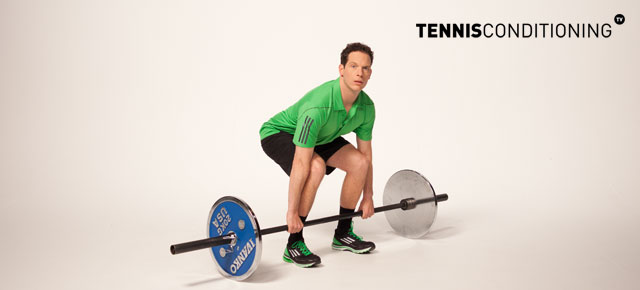Do you want to find out how fit your tennis players are? Unfortunately coaches have many problems with the fitness testing procedure. Read on and find out how to correct them!
In last week’s episode I talked about How Flexibility Impacts On-Court Performance.
In today’s episode I will talk about problems with fitness testing for tennis players and explain how to correct them.
You will learn about:
- Test validity and how to improve it
- Test reliability
- Testing recommendations
Did you know that some of the test conducted by NCAA Div I schools are invalid?
I have heard from many national tennis coaches that their athlete’s fitness testing results do not translate onto the court.
For example, there are some kids who do very well during the endurance test but they fatigue rather quickly during matches.
Why is that? Well, one reason could be that the fitness testing being conducted is unreliable.
Problems with fitness testing are a widespread phenomenon because test validity and test reliability are often compromised.
What is Fitness Testing Validity?
Test validity means that you truly assess what you try to test, which doesn’t always happen.
For example, some people use the sit & reach test to assess total body flexibility.
It is reliable, which means that subsequent tests will be consistent. But the test is not valid because the sit & reach doesn’t predict total body flexibility. Since test outcomes are affected by the individual’s limb length.
How to Ensure Fitness Testing Validity
In order to ensure test validity, adherence to the following is important:
1. Consistency of Test Parameters
Are all test parameters consistent so you assess whatever you are supposed to test (e.g. power)? For example, there are 3 exercises that most coaches use to test power capabilities:

Right there, in the title, “the power lift test” is invalid because neither of the aforementioned exercises assesses power capabilities. Because none of these exercises are performed at high/maximum velocity (Power = [Force x distance]/time).
Where is the speed component?
Actually, athletes will perform these lifts in a slower fashion so that they can exert more force because they can stabilize the movement more.
Therefore it assesses the opposite, strength capabilities.
2. Skilled Testers
Is the tester skilled & knowledgeable in the test protocol? If the test isn’t conducted properly in an orderly fashion and/or the results are not recorded accurately then the test is invalid.
For example, when you try to count clap push-ups (how many can you do in 1 minutes) you run into difficulties because:
- if the technique is wrong/poor then the test is invalid
- if the athletes don’t go up and down all the way then the test is unreliable (they didn’t go through the full range of motion and hence you didn’t test what you were supposed to test particularly if you compare it to performance norms)
Also, if the athletes are not NCAA division I level athletes then don’t compare them to test scores for Division I athletes. Makes it invalid!
3. Athlete’s Test Proficiency
Is the athlete proficient in the test? If the athlete doesn’t know how to perform the fitness test then the fitness testing is invalid!
This is one of the prominent mistakes committed by many coaches.
4. Psychological & Physiological Preparedness
Is the athlete psychological/physiological prepared to be tested? If the athlete is not motivated to do the test it’s going to be very hard to optimize fitness test outcomes.
Physiological preparation refers to dynamic warm-ups, which activate the nervous system.
It hence increases firing rate & synchronicity of muscle fibers, enhances muscle fiber recruitment, faster afferent/efferent conversion (signal transmission), and greater flexibility of the tissue so there is less resistance within the tissue.
So, the signal is very strong and powerful (which is what we want) and you also have greater pliability of the muscle tissue, so there is less resistance within the tissue.
Athletes should not static stretch prior to fitness testing because that creates relaxation within the muscle tissue. That decreases its ability to create maximum tension and the velocity of the tension is reduced as well.
Find out more about the benefits of a proper warm up routine and watch the following video showing a dynamic warm up routine you can do as well!
What Is Test Reliability
Test reliability refers to test consistency. Retesting should be an exact duplication of the initial test conducted. That means that all factors need to be consistent, such as:
- the scoring system
- the test protocol that was used before
- use of the same equipment (making sure equipment is calibrated correctly)
- same warm-up routine
Now, with this in mind it is not surprising that most endurance tests conducted by tennis coaches are invalid.
For example, why would someone have the athletes steady-state jog to assess endurance capabilities when a tennis players moves in multi-planar during a match.
In other words, jogging occurs in one plane/direction (sagittal plane; forward) and assesses the endurance capabilities of the involved musculature. But a tennis player moves forward, backwards, and side-to-side, which requires contributions from various muscle groups.
Therefore, the uni-planar steady-state endurance test doesn’t test the musculature involved in multi-planar movement on the tennis court. That makes the test invalid.
Instead, check out the following interval training video where we do a drill that you can also use to assess your tennis player’s endurance!
